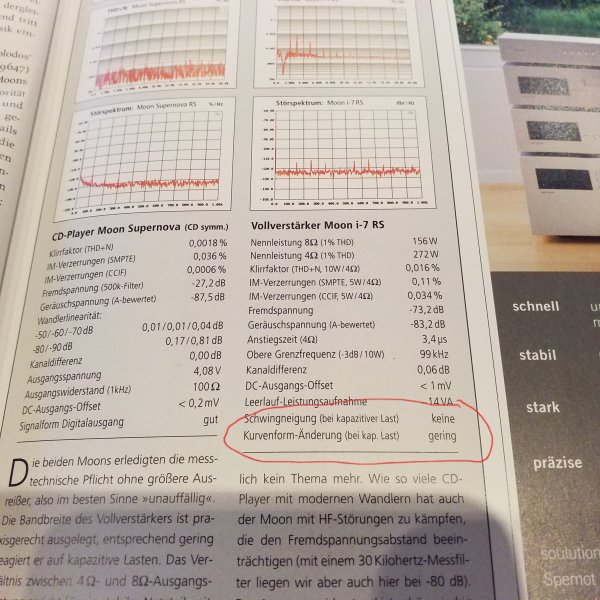I'll provide an example Ron @Ron Resnick; Gryphon Mephisto with Cardas Clear Beyond. The Capacitance of the Clear Beyond is much higher than Cardas Clear. CC off the top of my head has a capacitance of 278 picofarad pF (per foot) the Clear Beyond is much higher (I think double) The Cardas Clear can be used as I did for sometime. When Cardas sent me the Clear Beyond to demo, the amp started oscillating. I talked with Nils from Gryphon in Denmark and he wasn't surprised due to the capacitance and the high bandwidth of the Mephisto...I now use Furutech DSS 4.1...BTW my speakers remain Joseph Audio Pearl 20/20's. They had no bearing in the example I provided...EDIT; BTW the Furutech have a capacitance of 51.69 pF per meter...I think I mentioned before that Don and Ralph are amongst other “Subject Matter Experts” (SMEs) in this stuff.
I am not going to pretend, but I am at least a bit aware.
Something about capacitance, or maybe inductance of the system in the MHz or kHz range causing poles to move outside of the unity circle if you speak “Bode plots”.
(I think it is when one gets a high capacitance?)
I can identify a Bode plot, but I am just not a EE.
The fact that this can happen with just changing speaker cables - and the fact that one can see it clearly on an o-scope well outside of our hearing range, is why one may want to consider using an o-scope.
And the oscillation can burn an amp up in a hurry.
If the system is not buzzing away in the RF range then switch to subjective. If it is buzzing away, then objectively one knows that all hell is going to be breaking loose soon, and it is best to stop before the magic smoke leaves the scene. (IMHO)
But there is a crossover… and we do, or at least I, not know what the impedance of that ribbon is.
I am also not sure how the XO is used to combine the speakers with the subwoofers.
There are hundreds of pages I probably missed a lot, like a block diagram.
Some amps also do not like capacitively coupled loads, and want some resistance at DC.
That could be a potential causal mechanism… at least for people like me that understand Ishkawa charts better than Bode plots.
Last edited:



